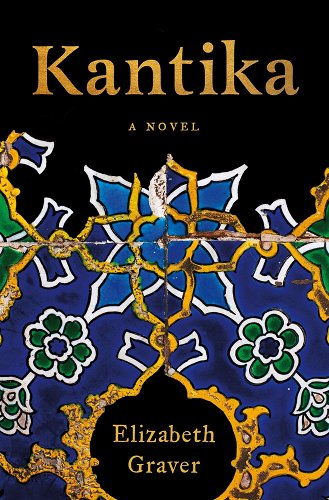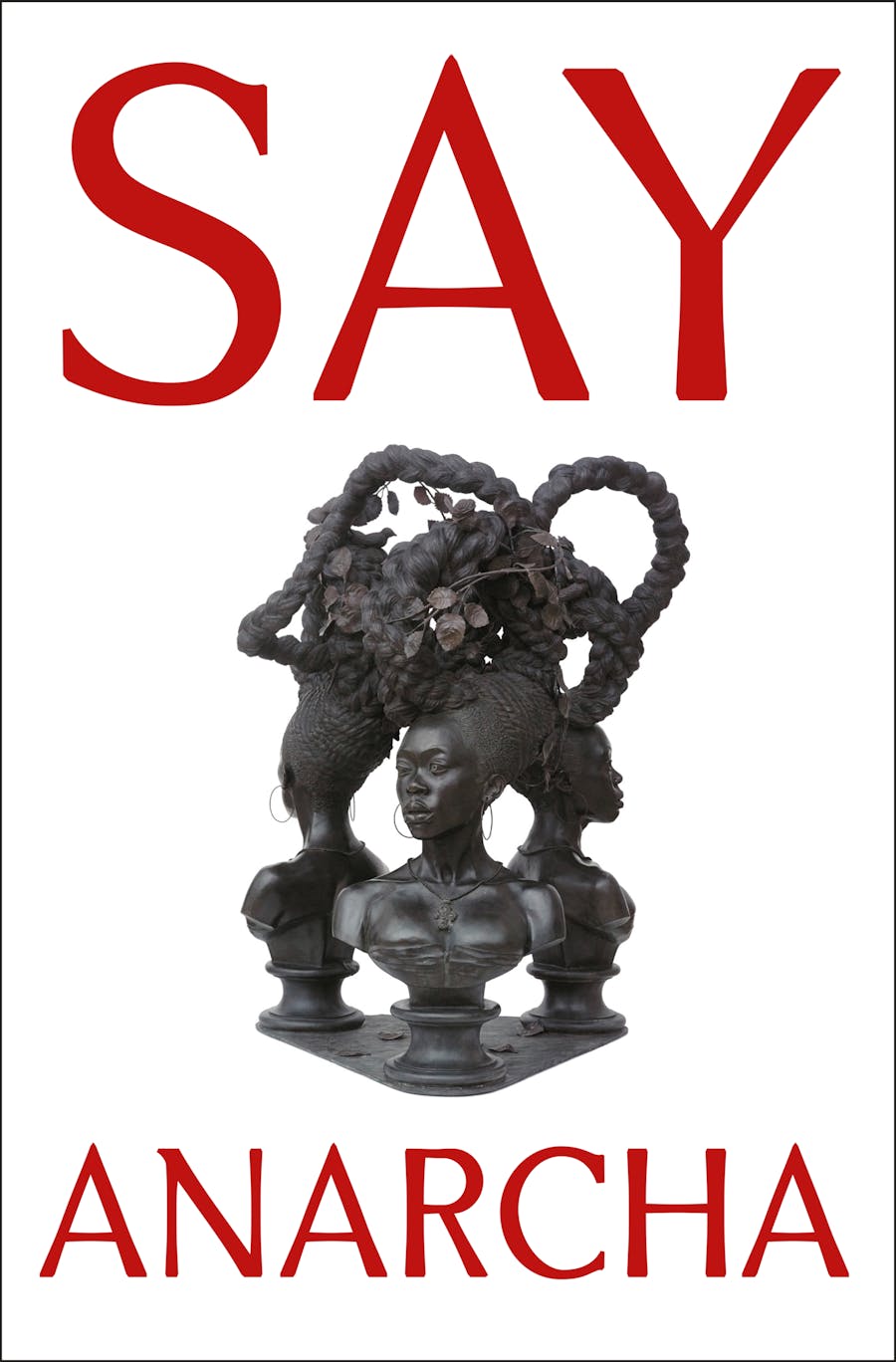Elizabeth Graver and J.C. Hallman on the Blurred Boundaries between Fact and Fiction

We first met in June 2021, at a residency at Marble House Project in Dorset, Vermont. We retreated to our studios to work for hours on end (Elizabeth on the last chapter of her novel Kantika, and J.C. on a near final draft of Say Anarcha), but somehow time expands at these residencies. Over dinner and perched atop the marble quarry behind the house, we had long, wandering conversations about life and love, politics, and art.
Toward the end of our stay, the two of us gave a reading in the barn. The subjects of our work—Rebecca, a fictional character inspired by Elizabeth’s Sephardic Turkish grandmother, and Anarcha, an enslaved woman subjected to a harrowing series of gynecological experiments—inhabited separate worlds, but something happened between the two of them as our words came forth.
Some of this was in the texture of the sentences—we both love cadence and image; we both were influenced by writers like James Agee and Toni Morrison—but there was also an unexpected meeting in the subject matter: two women formed and deformed by history, fighting back, making lives. Later, amazingly, Say Anarcha and Kantika were both accepted for publication by Henry Holt & Co. for the same publication season.
Let’s talk more, we said.
*
J.C. Hallman: Kantika is epic in its scope—a beautifully written family saga that spans a century of time and at least three continents. In your acknowledgements you make the point that you “drew on the experience of some real people, most centrally [your] maternal grandmother.” It’s your family, your heritage. Were you ever tempted to simply call it nonfiction? What does it mean to say a fiction is based in fact, or is partly true? What is the value of that?
Elizabeth Graver: I love how this comes up in both our books. I did consider writing Kantika either as nonfiction or as a novel that didn’t signal its relation to my family history. Nonfiction didn’t feel like the right form because there were too many holes (for primary source material for the first half, I only had a few microcassettes from 1985 when I interviewed my grandmother, and some photographs).
Fiction let me draw close and inhabit the consciousnesses of a range of people.Signaling the lacunae too overtly broke the spell I wanted to cast and drew attention to myself as a narrator in ways I didn’t like. Kantika both is and is not my story. Much of what I write about is far afield for me (I wasn’t even born in 1950, when the novel ends). Fiction let me draw close and inhabit the consciousnesses of a range of people, some entirely invented, others inspired by a handful of details or, as we approach the present, by more extensive interviews.
So I went with fiction, but the factual roots do also really matter to me, both because they’re deeply personal and because they reveal vanishing and neglected histories—of 20th-century Sephardic immigrants to the United States, who have been largely written out of the Jewish American story; of Jews moving “back” to Spain in the 20th-century; of the endangered, beautiful language of Ladino (also called Judeo-Spanish).
I wanted to lightly acknowledge the “realness” of both the personal and historical contexts, while also having freedom to invent. Including photos signals a relationship to fact. Among other things, I hope the hybridity of the book’s form invites readers to imagine their own family stories, starting with the nuggets they have access to.
How you handle genre in Say Anarcha is fascinating. I was struck by how the holes in the story—both bodily in the form of gynecological injuries suffered by the enslaved women, and narratively since Anarcha was denied a voice—matter as absences in central ways. Yet your book also reads as novelistic at times, full of the poetry of lived life, tactile detail and emotion, especially in Anarcha’s sections. I was left with the feeling that I knew her more than I did not. How and why did you navigate and sometimes even put pressure on the line between fact and fiction, biography and speculation? Did you ever think about writing this story as a novel?
JCH: Yes, I did—and I think I opted for calling it nonfiction for reasons that are similar to what you’re describing. Ultimately, I believe that the distinction between fiction and nonfiction is arbitrary, something that is more convenient for libraries and bookstores than it is for writers, who often (like us!) find themselves drawn to the interstices between genres. At the same time, it does matter when we say that a story is factual, or even based on facts. That changes how we take the work in as readers, and changes what we expect of it, as well.
In writing Say Anarcha, I thought about how the hard sciences handle this sort of question, particularly when they present their work to the public. For example, when you go into a natural history museum and look at the tyrannosaur skeleton in the lobby, you’re not actually looking at bones, or even at casts created from a complete skeleton that was found in that position. Rather, you’re looking at something upon which a significant creative process has been brought to bear, with everything from logical inference to outright guesswork coming into play. But is what you see in the lobby fiction or nonfiction? Is it a skeletal model or a sculpture?
I thought about how fact is decided in society writ large, particularly in regard to the legal system. Juries who hear criminal cases are called “finders of fact,” and what I did, in writing Anarcha’s story, was proceed very much like a prosecutor, creating a narrative that fit with all the evidence I’d found during years of painstaking research. If that’s good enough for “fact” in society, then shouldn’t it also be the case for books like ours?
This will sound like a change of subject, but it’s really not. I want to talk about beginnings. I remember when I first started your book, it was like sinking not only into an era and a place, but a mood. Can you talk about how the start came about and what you were trying to achieve—and whether it has anything to do with what we’ve been saying about fiction and nonfiction?
EG: In earlier drafts, I began with a prologue in Rebecca’s voice in 1985, as she was being recorded by her granddaughter (aka me), but my editor, Riva Hocherman, thought, rightly, that the prologue signaled overtly themes that the rest of the novel left implicit in more powerful ways, and—not without a pang—I cut it. The new opening reads as more fictional, though I do start with a family photograph, which unsettles things a little. Many of my revisions had to do with erasing visible nonfiction seams.
Now the novel starts with the line “This, the beautiful time,” and swoops us right into a little girl’s life in early 1900s Istanbul, where she has a privileged childhood full of open doors, extended families and a robust Sephardic culture. That phrase—“This, the beautiful time”— repeats at a few different points in the novel. I’m interested in nostalgia and what it means to think you’re at the height of your life, and then, as things change (often radically in the context of migration), to learn to locate joy in new and, from an earlier vantage point, unimaginable ways.
Unlike Kantika, Say Anarcha does have an explicit near-present frame. You open in August 2017 in the wake of the deadly Monument Protests in Virginia, then take us on the writer’s journey to Anarcha’s neglected grave. What made you decide to start there?
JCH: It’s so fascinating that “this, the beautiful time” recurs as a refrain throughout the book—it makes perfect sense as “kantika,” the title of the book, means “song” in Ladino. You must enter it with a different mindset. I thought about that in my own book, with a description in chapter one of the night of the falling stars on November 13, 1833. I thought of this as a kind of overture, a way of setting both the stage and the mood. And astronomical events recur throughout. But you’re right—my introduction actually begins with a modern moment, and the discovery of Anarcha’s grave.
And my editor, Retha Powers, also had a hand in that decision! I happily assented, because I think it’s important for a book of history to establish for the reader why it matters to a modern mind. A book of nonfiction matters in the world because it’s true. Fiction matters—or does its job—even though it’s not. In calling my book nonfiction I had to stress that it was not only a reckoning with a past, but with a tragically ongoing present as well.
I’m interested in nostalgia and what it means to think you’re at the height of your life.Something else that characterizes both of our books is that they cover great swaths of time and place. Was that new for you as a narrative challenge, and how did you go about handling it?
EG: My previous novel, The End of the Point, was my first attempt to take on many decades and multiple perspectives. It follows a white Anglo-Saxon family at their summer home over half a century. There, I was interested in exploring how a small place could act as a tight container, almost a crucible, for one family’s intersections with history, land, social class and each other across generations.
At the end of the novel, a Jewish in-law character named Rachel shows up, a “child of diaspora,” which is my own family’s story. She sort of beckoned me towards what came next, and though the two books are radically different in their subject matter, for me they’re in conversation with each other: Here, a look at one slice of America over the 20th-century; here, concurrently, another lens. The huge challenge—and pleasure—of writing Kantika was its diasporic reach. I have sections set in Turkey, Spain and Cuba and took research trips to all three countries. Along the way, I found many gems I had to discard in order to stay true to the novel’s emerging shape.
The range and reach of Say Anarcha has the harrowing effect of enacting just how persistent and intertwined the atrocities of slavery are. I picture a tangled map, full of red lines, or a woman’s body, scarred, sacred and persistent. Yet the book, so deeply about embodiment, is also about absence and erasure. You begin Say Anarcha with two epigraphs: “In the whole of history, how many slaves’ names are known to you? I can think of two” (from George Orwell), and “Say her name—Anarcha!” (“Protestors, Fifth Avenue, Manhattan, 2016”).
Early on, you provide a long list of the names of formerly enslaved people whose narratives helped you re-recreate Anarcha’s story, and we learn that Anarcha’s name wasn’t necessarily what she was actually called. She’s a ghost, an actual person, and a symbol. Why is naming so important in the context of Anarcha’s story and that of J. Marion Sims, the doctor who submitted her and other enslaved women to years of experimental surgeries?
JCH: Yes, in starting the book with the Orwell quote, I really wanted to call him out. I love Orwell, but he really flubbed this one. He’s got Frederick Douglas, Sojourner Truth, Solomon Northrup, Harriet Tubman, and many more to choose from… and when he says he can think of two, one is probably Spartacus! So this was a pretty big hole in his knowledge, and I think that’s directly related to the entire say-their-name phenomenon.
In including the long list of names of enslaved people at the start of Say Anarcha—peoples whose narratives, as part of the Federal Writers’ project, contributed to the recreation of Anarcha’s story—I wanted to challenge Orwell and everything he represents. You can’t think of more than two names? Well, here’s five hundred! (And all of those names had just been published when Orwell was alive!) In the book itself, I make a point of including many names, sometimes nearly in list form, because names themselves are a symbol of history. If a name survives, then history, truth, the whole idea of fact and what truly happened, can also survive.
EG: Why isn’t your own name on the front cover of the book, an unconventional design choice?
JCH: The goal of this book was to center Anarcha’s story, not mine. There’s no dedication in the book, and no acknowledgement page either. In many ways I felt less like the writer of this book, and more like a curator of its facts, so I was happy to make sure that Anarcha’s name, and the names of the many enslaved people who contributed to a telling of her story, got the attention they deserved.
You discuss names as well! In particular, some of the names in your novel are real, while others are invented. How did you decide which names to leave intact? And how did you use the names you created, or modified?
EG: In researching Kantika, I stumbled upon a short 1929 film by a Spanish man named Ernesto Giménez Caballero. In a kind of neocolonial, imperialist move designed to help an ailing Spain, he was briefly devoted to promoting a 1925 law that offered citizenship to Sephardic Jews, and he made this weird little film showing “Spanish Jews” in the Balkans and North Africa, and even (and this is where I was stopped short) a little Jewish family in a synagogue in Barcelona! It was my family—I thought it was from having seen photos that lined up with the images, and my uncle, who was a toddler in the film, confirmed my suspicion—but my family unnamed. The filmmaker went on to become a Fascist and then an ally of Hitler’s. My great-grandfather, Alberto Cohen died in the ransacking of the synagogue during the Spanish Civil War. It mattered to me in this context that I put names to people who were left unnamed and used as pawns.
Elsewhere, I use real names as a private gesture toward my family. My Uncle David died in 2021 so didn’t live to see my book come out, but I spent days interviewing him about his childhood, and I read him pages from Kantika (featuring the David character, of course) over Facetime as he lay dying in the hospital. He wanted me to use his real name—a kind of legacy—even as he understood that I’d taken liberties with his story. Inside the novel, names are important in that they mark people as Jewish, or as foreign, or as connected to a grandparent (traditional Sephardic naming practices differ from Ashkenazi ones in that children are named after living relatives). In Barcelona, Rebecca is advised to assume a fake surname if she wants to get a job. Some of the real names were also just beautiful and part of the linguistic richness of the Sephardim. Luna. Sultana. Who can resist?
I wish we could witness a conversation between Anarcha and Rebecca, two remarkable women who share some traits.One last question! We both include images in our books. Mine are mostly family photographs that signal the nonfiction origins of the story. They also draw attention to the importance of photos in the context of migration, where they serve as connection across distance, proof (a passport or citizenship photo), capital (a photo sent to a potential mate), a way to pass (Rebecca refigures her style to blend into new circumstances), and a commentary on the female body—both able-bodied and, in my character Luna’s case, disabled.
In Say Anarcha, the images are of torn scraps of handwriting or the occasional medical drawing, along with a photo of Anarcha’s gravestone (outside of the book, you’ve created an extensive online annotated bibliography, Annarchaarchive.com, with many more images). How did you decide what images to include and exclude from the actual book? What made you want to include images in the first place?
JCH: Yes! How could we have left this common strategy to the end? I loved the images in Kantika precisely because the world and the experience of the characters—and a hauntingly perpetual sense of dislocation—was so novel-like (it is a novel!) that it was stunning to encounter those photographs and align them with the mental image I’d been forming of the characters.
For my own, I feel like I need to stipulate that my book is literary in spirit—I hope it’s art! Like you, I wanted to provide the reader with reminders that the source material is all there: this is an artful collage of facts, and their being facts matters. Yes, there’s the online “illustrated bibliography” of sources, but as to what went into the printed book, I think we were both after the same thing: images that evoke a sense of atmosphere and milieu, faces sometimes, a chance for the reader to not only become informed about a past or a history, but to behold it as well.
EG: I wish we could witness a conversation between Anarcha and Rebecca, two remarkable women who share some traits—grit and tenderness, an ability to minister to wounded bodies—even as they inhabit such separate worlds and times. In the absence of that, this conversation between us has been a treat.
__________________________________

Kantika by Elizabeth Graver is available now from Metropolitan Books.

Say Anarcha by J.C. Halman is available now from Henry Holt Co.